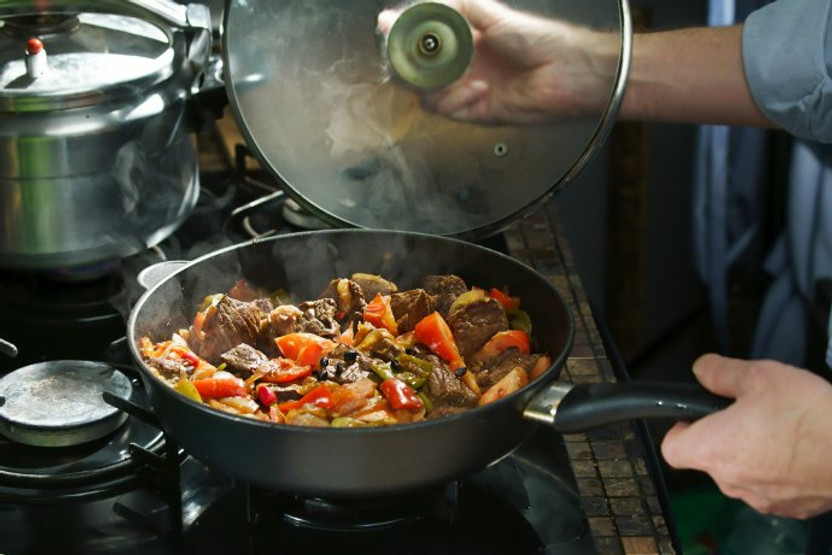Do You Need a Sauté Pan?
Posted by Julie on Nov 5th 2018
With all the pieces of cookware available, it’s understandable why home cooks might feel confused by the choices. If a recipe calls for a saucier pan, can you substitute a saucepan in its place? We covered that question in a previous post. Now it’s time to address the question of whether you need to have a sauté pan in addition to a skillet. Are these two pieces of cookware interchangeable?
Sauté Pan vs. Skillet
Similar to the difference between a saucepan and a saucier pan, a sauté pan has straight sides and a skillet has sloping sides. This construction gives the sauté pan more surface area in contact with the burner than a skillet. Serious Eats did the calculations, and a skillet has 30% less cooking surface area than a sauté pan of the same diameter.

Another key difference pertaining to the sides of these pans is how well they contain ingredients. The straight sides of a sauté pan are more effective at keeping liquids — broth, oil, or sauce — from splashing outside the pan. The sloped sides of a skillet make it easier to toss, flip, and release food.
Advantages of a Sauté Pan Over a Skillet
A skillet is ideal for many cooking applications. If you’re scrambling eggs, a nonstick skillet is your best bet. If you’re stir-frying vegetables or sautéing chunks of meat, a skillet is lighter and easier to maneuver. Cooking tasks that don’t involve much liquid are well-suited to a skillet or fry pan.
On the other hand, a sauté pan is ideal for shallow frying or braising, or for recipes that involve transferring between the stove top and the oven. When frying, a sauté pan keeps the oil contained but allows for easier access to the food than a Dutch oven. When braising, you can sear first and then add broth or other liquid. Cooks Illustrated also notes that a sauté pan is ideal for wilting and sautéing greens like spinach or cabbage.
What to Look For When Buying a Sauté Pan
We really like this piece from Serious Eats as a helpful resource not only in terms of understanding the differences between a skillet and a sauté pan, but also as a way to identify your priorities in a sauté pan. One of the key points they highlight is that home burners accommodate pans of 12-inch diameter or less. Keep this in mind when you shop for other large cookware too, such as stockpots.
Because a sauté pan is larger than a skillet of equal diameter, it’s also heavier. While you won’t shake, toss, and flip with a sauté pan, you will likely move it from the stovetop to the oven and back. Look for a pan with a helper handle opposite the primary handle to assist you in balancing the pan.

Finally, although we know how popular nonstick cookware is, Cooks Illustrated advises against buying a nonstick sauté pan. They note that a stainless steel or cast iron surface is better for frying or braising, especially when searing meat to create a pan sauce. The light-colored surface of stainless steel or enameled cast iron (such as the sand-colored enamel of Le Creuset) aids in monitoring your progress.
Check out our selection of saute pans. We offer stainless steel from All-Clad and Wolf, along with nonstick from Swiss Diamond, Scanpan, and OXO.
 Free shipping over $49
Free shipping over $49










